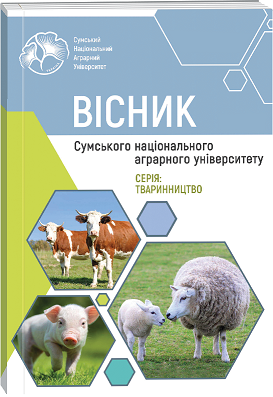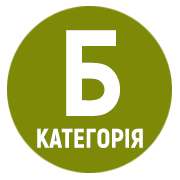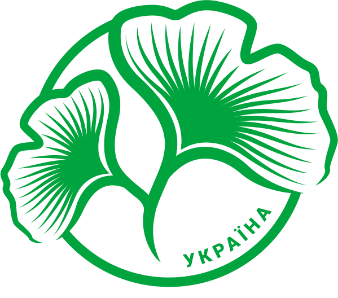ADAPTIVE CAPABILITIES OF HOLSTEIN COWS OF INTRODUCED ORIGIN AND THEIR OWN REPRODUCTION
Abstract
In Ukrainian farms, it is constantly practiced to import livestock of Holstein animals of foreign selection, which motivates the expediency of studying their adaptability. The signs that characterize the milk productivity of cows of different genotypes were studied within two selection groups of the Holstein breed of Canadian selection – introduced and cows of their own generations. The assessment of Holsteins of Canadian breeding showed that their milk productivity is sufficient in new ecological, technological and feed conditions. Data from prim parous cows showed that they produced an average of 6,377 kg of milk, with a high fat (3.92%) and total fat (250.0 kg) content. Holstein cows gained weight during the first three lactations with a significant increase in the second compared to the first by 574 kg (Р<0.001) and in the third by 848 kg (Р<0.001). Starting from the fourth lactation (6.798 kg), the average milk yield of Canadian Holsteins began to decrease slightly, stabilizing at the same level from the fifth to the seventh with an average milk yield for the last one of 5.487 kg. Canadian Holsteins' hope for better lactation was 7557 kg. The fat content of the milk of first-born cows with variability in the total proportion of fat was 3.82-3.94%, and the yield of fat was 211.8–284.7 kg. The analysis of the selection situation based on the evaluation of the available stock of cows of own reproduction proved not only the preservation, but also the increase of milk productivity by them, surpassing similar characteristics of Holsteins brought to the farm from Canada. The first-born cows of their own reproduction were better than the introduced Holstein cows of the same age for milk yield with a difference of 280 kg (Р<0.01), and for higher lactation – by 432 kg (Р<0.01). According to the fat content, a narrowing of the phenotypic variability was observed in animals of own reproduction, which was within the limits of 3.81–3.84%. According to the level of coefficients of variation of the hopes of cows of their own reproduction according to the general information base, it depended on the year of calving, especially the first, by 14.3–44.2%. Almost at the same level, the variability of the coefficients of total milk fat yield (11.2–47.7%) in the general phenotypic variability of this trait indicates a significant influence of the year of calving. The fat content according to the obtained coefficients (7.6–21.4%) depended to a lesser extent on the influence of the year of calving. The introduced Holstein breed from Canada in new technological and ecological-feed conditions was characterized by high adaptive capacity, which is confirmed by the indicators of milk productivity of both the imported livestock and animals of their own reproduction.
References
2. Fedorovych, Ye. I., Fedorovych, V. V., Mazur, N. P., Bodnar, P. V., & Fyl, S. I. (2019). Vplyv seredovyshchnykh chynnykiv na molochnu produktyvnist koriv [Vplyv seredovyshchnykh chynnykiv na molochnu produktivnist koriv]. Bulletin of the Sumy National Agrarian University. Series: Animal husbandry Vol. 3 (38). P. 44–53. URL: http://nbuv.gov.ua/UJRN/Vsna_tvar_2019_3_8 (In Ukrainian). (In Ukrainian).
3. Halushko, I. A. (2006). Analiz molochnoi produktyvnosti holshtynskoi khudoby zarubizhnoi selektsii v umovakh ATZT «Ahro-Soiuz» Dnipropetrovskoi oblasti [Analysis of the milk productivity of Holstein cattle of foreign selection in the conditions of the Agro-Soyuz agricultural enterprise of the Dnipropetrovsk region]. Bulletin of the Sumy NAU. Issue 10 (11). P. 23-27. (In Ukrainian).
4. Havrylenko, M. S., & Polupan, Yu. P. (2005). Molochna produktyvnist koriv holshtynskoi porody [Milk productivity of Holstein cows]. Herald of Agrarian Science. 2005. No. 10. P. 84. (In Ukrainian).
5. Khmelnychyi, L. M (2014). Praktykum z selektsii silskohospodarskykh tvaryn [Workshop on selection of agricultural animals]. Amounts: Publisher: FOP Lytovchenko E.B. 256. (In Ukrainian).
6. Khmelnychyi, L. M., & Karpenko, B. M. (2020). Eksteriernyi typ koriv-pervistok holshtynskoi porody otsinenykh za metodykoiu liniinoi klasyfikatsii [Exterior type of first-born cows of the Holstein breed evaluated by the method of linear classification]. Animal breeding and genetics. Vol. 60. С. 78-84. DOI: https://doi.org/10.31073/abg.60.01 (In Ukrainian).
7. Khmelnychyi, L. M., & Kostiuk, V. V. (2008). Efektyvnist dovichnoho vykorystannia koriv ukrainskykh chorno-riaboi ta chervono-riaboi molochnykh porid [Effectiveness of lifelong use of Ukrainian black-spotted and red-spotted dairy cows]. Bulletin of the Sumy NAU. Issue 10 (15). P. 66-75. (In Ukrainian).
8. Khmelnychyi, L. M., & Kostiuk, V. V. (2028). Adaptatsiina zdatnist koriv molochnykh porid riznoho pokhodzhennia [Adaptability of dairy cows of different origins]. Mykolaiv DAU Bulletin. Mykolaiv. P.45-49. (In Ukrainian).
9. Khmelnychyi, L. M., & Vechorka, V. V. (2014). Henotypovi ta paratypovi chynnyky vplyvu na oznaky molochnoi produktyvnosti koriv ukrainskoi chorno-riaboi molochnoi porody [Genotypic and paratypic factors influencing the characteristics of milk productivity of cows of the Ukrainian black-spotted dairy breed]. Bulletin of the Sumy National Agrarian University. Series: Animal husbandry Vol. 7 (26). P. 87–90.
10. Khmelnychyi, L. M., Pryimachok, V. V., Prokopovych ,M. O., Kholod, S. O., & Hryshyn, S. Yu. (2021). Dependence of dairy productivity cows of Ukrainian Red-and-White Dairy breed on genotypic and paratypic factors. Bulletin of the Sumy National Agrarian University. Series: Animal husbandry Vol.. 1 (44). P. 23‒28. DOI: https://doi.org/10.32845/bsnau.lvst.2021.1.3 (In Ukrainian).
11. Khmelnychyi, L. M., Vechorka, V. V., Bondarchuk, V. M., & Samokhina, Ye. A. (2016). Adaptatsiina zdatnist koriv riznoho henetyko-ekolohichnoho pokhodzhennia [Adaptive ability of cows of different genetic and ecological origins]. Bulletin of the Sumy NAU. Issue. 7(30). P. 121-125. (In Ukrainian).
12. Kochuk-Yashchenko, O. A., Omelkovych, S. P., Kucher, D. M., & Kozachenko, K. M. (2022). Osoblyvosti eksterieru i produktyvnosti koriv holshtynskoi ta ukrainskoi chorno-riaboi molochnoi porid [Peculiarities of the exterior and productivity of Holstein and Ukrainian black-spotted dairy cows]. Taurian Scientific Herald. № 127. P. 256-266. DOI https://doi.org/10.32 851/2226-0099.2022.127.31 (In Ukrainian).
13. Kosior, L. T., Borshch, O. V., & Pirova, L. V. (2012). Molochna produktyvnist ta pokaznyky molokovyvedennia koriv riznoho viku ukrainskoi chorno-riaboi molochnoi ta holshtynskoi porid [Milk productivity and indicators of milk production of cows of different ages of the Ukrainian black-spotted dairy and Holstein breeds]. Technology of production and processing of livestock products: BNAU. № 7. P. 105-107. http://rep.btsau.edu.ua/handle/BNAU/718 (In Ukrainian).
14. Kostiuk, V. V., & Khmelnychyi, L. M. (2008). Efektyvnist dovichnoho vykorystannia koriv ukrainskykh chorno-riaboi ta chervono-riaboi molochnykh pori [Effectiveness of lifelong use of Ukrainian black-spotted and red-spotted dairy cows]. Bulletin of the Sumy NAU. "Livestock" series. Vol. 10(15). P. 66-74. (In Ukrainian).
15. Kruhliak A. P., Kruhliak O. V., & Kruhliak T. O. (2021). Osoblyvosti proiavu hospodarsky korysnykh oznak tvaryn riznykh henotypiv holshtynskoi porody v Ukraini [Peculiarities of the manifestation of economically useful traits of animals of different genotypes of the Holstein breed in Ukraine]. Animal breeding and genetics. Vol. 62. P. 37-48. DOI: https://doi.org/10.31073/abg.62.0 (In Ukrainian).
16. Ladyka, V. I., Khmelnychyi, L. M., & Povod, M. G. [etc.] (2023). Tekhnolohiia vyrobnytstva ta pererobky produktsii tvarynnytstva: pidruchnyk dlia aspirantiv [Technology of production and processing of livestock products: a textbook for graduate students]. Odesa: Oldi+. Edited by V.I. Ladyka and L.M. Khmelnychyi, p. 244 (in Ukrainian). (In Ukrainian).
17. Lytvynenko, T. V., & Bun, Yu. S. (2013). Vidtvorna zdatnist vysokoproduktyvnykh koriv holshtynskoi porody v umovakh lisostepu Ukrainy [Reproductive capacity of highly productive Holstein cows in the conditions of the forest-steppe of Ukraine]. Bulletin of the Sumy NAU. "Livestock" series. Vol. 1(22). P. 122-125. (In Ukrainian).
18. Milostiviy, R. V., Kalinichenko, О. О., Vasilenko, Т. О., Milostivа, D. F., & Gutsulyak, G. S. (2017). Problemni pytannia adaptatsii koriv holshtynskoi porody v umovakh promyslovoi tekhnolohii vyrobnytstva moloka [Problematic issues of adaptation of cows of golshtinskaya breed in the conditions of industrial technology of milk production]. Scientific Messenger LNUVMBT named after S.Z. Gzhytskyj, 19(73), 28– 32. (In Ukrainian).
19. Oleshko, V. P. (2016). Efektyvnist dovichnoho vykorystannia importovanykh koriv [Efficiency of lifetime use of imported cows. Animal breeding and genetics]. Breeding and genetics of animals Vol. 52. P. 49-58.
20. Panasiuk, I. M. (1999). Produktyvnist i vidtvorni yakosti holshtynskykh koriv kanadskoi selektsii v umovakh stepovoi zony Ukrainy [Productivity and reproductive qualities of Holstein cows of Canadian breeding in the conditions of the steppe zone of Ukraine]. Scientific Bulletin of the Lviv State Academy of Veterinary Medicine named after name S. Z. Hzhytskoho. Lviv. Vol. 3. Ch. 1. S. 224-225. (In Ukrainian).
21. Pelekhatyi M. S., Koberniuk V. V., & Osypenko M. V. (2020). Analiz produktyvnosti pervistok holshtynskoi porody zalezhno vid viku plidnoho osimeninnia ta zhyvoi masy [Analysis of the productivity of firstborns of the Holstein breed depending on the age of fertile insemination and live weight]. Scientific horizons. № 05 (90). P. 89-96. doi: 10.33249/2663-2144-2020-90-5-89-96 (In Ukrainian).
22. Piddubna, L. M., Zakharchuk, D. V., & Korniichuk, D. O. (2021). Otsinka vplyvu kompleksu faktoriv na molochnu produktyvnist koriv [Assessment of the influence of a complex of factors on milk productivity of cows]. Bulletin of the Sumy NAU. "Livestock" series. Vol. 2(45). P. 113-120. (In Ukrainian).
23. Pidpala, T. V., & Matashniuk, Yu. S. (2019). Vysokoproduktyvni korovy holshtynskoi porody v umovakh intensyvnoi tekhnolohii [High-performance cows of the Holstein breed in conditions of intensive technology]. Herald of Agrarian Science of the Black Sea Region. Vol. 2. С. 82-87. DOI: 10.31521/2313-092X/2019-2(102) (In Ukrainian).
24. Pishchan, I. S., Lytvyshchenko, L. O., Honchar, A. O., & Pishchan, S. H. (2019). Tryvalyi laktatsiinyi period ta riven molochnoi produktyvnosti koriv na promyslovomu kompleksi [Long lactation period and the level of milk productivity of cows on an industrial complex]. Cereal crops. Vol. 3. № 1. P. 139–148. https://doi.org/10.31867/2523-4544/0071 (In Ukrainian).
25. Polupan, Yu. P. (2013). Ontohenetychni ta selektsiini zakonomirnosti formuvannia hospodarsky korysnykh oznak molochnoi khudoby : dys. ... d-ra s.-h. nauk [Ontogenetic and selection regularities of the formation of economically useful traits of dairy cattle: diss. ... Dr. S.-Mr. of science]. Chubinske, 694. (In Ukrainian).
26. Salohub, A. M. (2019). Vplyv henotypovykh ta paratypovykh chynnykiv na oznaky molochnoi produktyvnosti koriv ukrainskoi chervono-riaboi molochnoi porody [The influence of genotypic and paratypic factors on the characteristics of milk productivity of cows of the Ukrainian red-spotted dairy breed]. Bulletin of the Sumy National Agrarian University. Series: Animal husbandry Vol. 3 (38). P. 37–43. УДК: http://nbuv.gov.ua/UJRN/Vsna_tvar_2019_3_7 (In Ukrainian).
27. Shpetnyi, M. B., Zabolotna, V. K., & Hryshyn, S. Yu. (2021). Molochna produktyvnist ta vidtvoriuvalna zdatnist koriv zalezhno vid henetychnykh ta paratypovykh chynnykiv [Milk productivity and reproductive capacity of cows depending on genetic and paratypic factors]. Bulletin of the Sumy NAU. "Livestock" series. Vol. 4(47). P. 33-42. DOI: https://doi.org/10.32845/bsnau.lvst.2021.4.6 (In Ukrainian).

 ISSN
ISSN  ISSN
ISSN 



